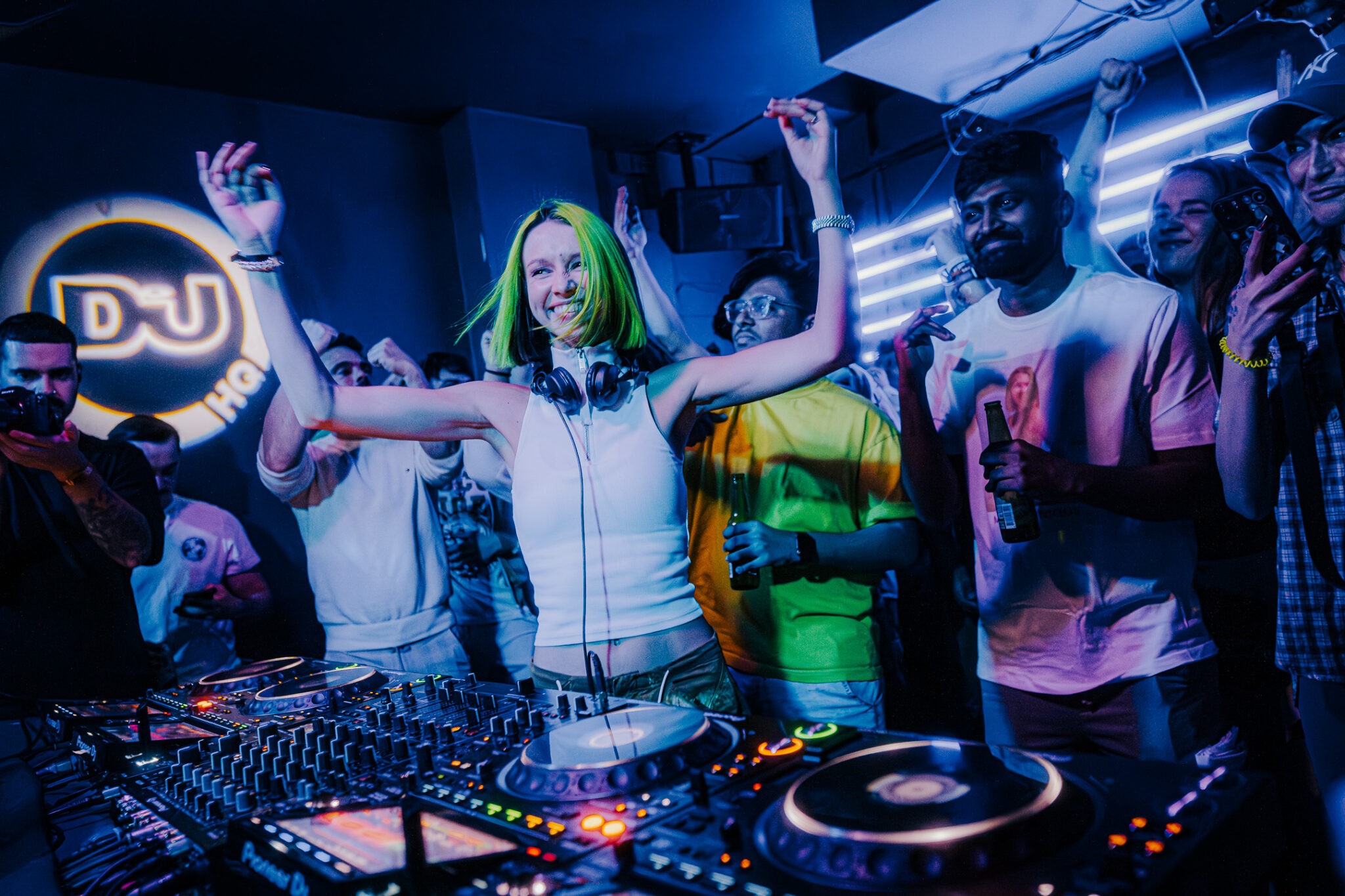Reading Time: 19 minutesIn the world of writing instruments, few brands evoke as much prestige and quality as Caran d’Ache. Founded in Geneva in 1915, this Swiss company quickly established itself as a symbol of innovation and craftsmanship. At a time when digitalisation reigns supreme, Caran d’Ache manages to stand out by combining tradition and modernity, attracting a loyal clientele of writing enthusiasts, artists and professionals. Thanks to iconic products such as the famous coloured pencils and luxury pens, the brand embodies Swiss excellence while committing itself to an eco-responsible approach. In this article, we explore why Caran d’Ache remains the undisputed leader in writing instruments, looking at its heritage, innovations and commitment to sustainability. From the importance of the quality of its materials to the impact of its refined design, every aspect contributes to its unrivalled reputation. Let’s delve into the fascinating world of this benchmark brand in the art of writing, and discover how it continues to inspire generations around the world.
The Caran d’Ache Heritage
The Origins of the Brand
Founded in the heart of Switzerland in 1915, Caran d’Ache began its journey in Geneva, a city renowned for its precision and craftsmanship. The brand’s name, derived from the Russian word for “pencil,” reflects its deep-rooted commitment to creating exceptional writing instruments. From its inception, Caran d’Ache set out to combine Swiss precision with artistic flair, producing tools that would inspire creativity in both professionals and students alike.
Under the guidance of Arnold Schweitzer, a visionary entrepreneur, the brand quickly established itself as a leader in the world of stationery. Schweitzer’s passion for quality and innovation laid the foundation for what would become a century-long pursuit of excellence. Caran d’Ache’s early success was built on its dedication to craftsmanship, a value that remains at the core of the brand today.
The Evolution Through the Decades
As the decades unfolded, Caran d’Ache continued to evolve, adapting to the changing needs of its diverse clientele while staying true to its heritage. The 1930s saw the introduction of the Fixpencil, a revolutionary mechanical pencil that exemplified the brand’s commitment to innovation and functionality. This was followed by the launch of the Ecridor collection in the 1950s, which showcased the brand’s flair for luxurious design and precision engineering.
Throughout the 20th century, Caran d’Ache expanded its range of products to include not only pens and pencils but also felt-tips, paints, and a wide array of stationery items. The brand’s dedication to quality and performance ensured that each product was crafted with the utmost care, meeting the high expectations of artists, pupils, and professionals worldwide.
In the 1980s and 1990s, Caran d’Ache embraced new technologies and materials, further cementing its reputation as a pioneer in the writing instruments market. The introduction of water-soluble coloured pencils and the development of innovative graphic tools highlighted the brand’s ability to blend tradition with modernity, offering products that were both durable and creatively inspiring.
The Commitment to Quality and Innovation
Caran d’Ache’s unwavering commitment to quality and innovation is evident in its meticulous production processes. Each writing instrument is crafted in Switzerland, ensuring that every pen, pencil, and accessory meets the brand’s stringent standards of excellence. This dedication to craftsmanship is complemented by a focus on sustainability and ecological development, with Caran d’Ache continuously seeking ways to minimize its environmental impact.
From the careful selection of raw materials to the precision of assembly, Caran d’Ache’s know-how is a testament to the brand’s pursuit of perfection. This commitment to quality has not only secured its status as a leader in the writing instruments market but has also earned the trust and satisfaction of customers around the globe.
A Universe of Creativity and Inspiration
Caran d’Ache’s products are more than just tools; they are gateways to a universe of creativity and inspiration. With a wide range of colours, designs, and personalisation options, the brand offers something for everyone, whether an artist seeking the perfect shade, a student aspiring for academic excellence, or a professional looking to make a lasting impression.
The brand’s collections, celebrated for their elegance and finesse, are a reflection of Caran d’Ache’s passion for creativity and innovation. Each product, from the simplest pencil to the most luxurious pen, is designed to inspire and elevate the user’s experience, making every writing occasion a moment of artistry and expression.
The Artistry Behind Caran d’Ache: A Legacy of Excellence in Writing Instruments
The Quality of the Materials Used
Caran d’Ache, the epitome of Swiss precision and luxury, has long been synonymous with unparalleled quality in writing instruments. This reputation begins with the careful selection of materials. The brand prides itself on choosing only the finest raw materials to craft its extensive range of pens, pencils, felt-tips, and other stationery items. Every Caran d’Ache instrument is an expression of durability and elegance, designed to withstand the test of time.
From the rich, lustrous resin of their pen barrels to the meticulously sourced precious metals used in their luxury collections, Caran d’Ache ensures that every component embodies excellence. The wood used in their pencils, often sourced sustainably, not only speaks to the brand’s commitment to ecology and development but also enhances the writing experience. Each element is chosen for its quality and ability to contribute to the overall performance of the writing instrument.
The Demands of Manufacturing
Manufacturing at Caran d’Ache is more than just a process—it’s a tradition steeped in history and innovation. Nestled in Switzerland, where precision is a national hallmark, the brand’s manufacturing techniques blend cutting-edge technology with time-honored craftsmanship. This unique synergy allows Caran d’Ache to produce instruments that are both innovative and traditional, catering to professionals, students, artists, and pupils alike.
The demands of manufacturing require an unwavering attention to detail. Each product undergoes rigorous testing to ensure it meets the brand’s stringent standards. This includes checks for precision, functionality, and durability. Caran d’Ache’s dedication to manufacturing excellence ensures that their products not only meet but exceed the expectations of their discerning customers.
The Importance of Craftsmanship
At the heart of Caran d’Ache’s dominance in the writing instruments market is its commitment to craftsmanship. Every pen, pencil, and accessory is a testament to the brand’s passion for artistry and know-how. Swiss craftsmanship is renowned worldwide, and Caran d’Ache is a beacon of this tradition, consistently delivering tools that inspire creativity and imagination.
The artisans at Caran d’Ache are not just manufacturers; they are creators who infuse each piece with a sense of luxury and finesse. This dedication to craftsmanship is evident in every feature and detail, from the smooth glide of a pen nib across paper to the vibrant colors of their artist-grade paints. It’s this meticulous attention to detail that makes Caran d’Ache a leader in the universe of writing instruments.
- Commitment to tradition and innovation
- Integration of cutting-edge technology with artisanal techniques
- Focus on luxury, precision, and performance
- Personalization options to cater to individual preferences
In the competitive market of writing instruments, Caran d’Ache stands out not only as a brand but as a symbol of excellence and inspiration. Their unwavering commitment to quality, tradition, and craftsmanship continues to set them apart from other Swiss brands like Lamy and Faber-Castell. It’s this dedication that has earned them a reputation as a leader, providing tools that elevate the art of writing and creativity for generations.
Innovation and Technology: Caran d’Ache’s Commitment to Excellence
New Product Ranges: A Symphony of Creativity and Precision
Caran d’Ache is a name synonymous with luxury and precision in the world of writing instruments. With a rich history that dates back to 1915, this Swiss brand has continuously set the benchmark for quality and innovation. Among its latest offerings, Caran d’Ache has expanded its product range to include a stunning variety of pens, pencils, felt-tips, and paints that cater to the needs of professionals, students, artists, and pupils alike. The collection is a testament to the brand’s dedication to providing tools that inspire creativity and cater to diverse artistic expressions.
Each product line is meticulously crafted, reflecting Caran d’Ache’s commitment to excellence and precision. The brand’s engineers and designers work hand-in-hand, ensuring that every pen and pencil meet the highest standards of functionality and design. Whether it’s the sleek elegance of a luxury fountain pen or the vibrant hues of a colored pencil set, Caran d’Ache’s products exude an aura of sophistication and finesse that is unrivaled in the market.
Sustainable and Ecological Technologies: A Green Revolution in Writing Instruments
In an era when ecological responsibility is more critical than ever, Caran d’Ache stands at the forefront of sustainable development in the writing instrument industry. The brand’s commitment to the environment is evident in its use of sustainable materials and eco-friendly production processes. By incorporating sustainable technologies, Caran d’Ache not only reduces its environmental footprint but also sets a precedent for others in the industry to follow.
- Eco-Friendly Materials: Caran d’Ache utilizes responsibly sourced wood and recycled materials in the production of its pencils and stationery. This commitment to sustainability ensures that the beauty of nature is preserved for future generations.
- Innovative Production Processes: The brand employs cutting-edge technology to minimize waste and energy consumption during manufacturing. This approach not only boosts efficiency but also aligns with Caran d’Ache’s ecological values.
Through these efforts, Caran d’Ache continues to inspire a shift towards more sustainable practices in the industry, proving that luxury and ecological responsibility can indeed go hand in hand.
Technology and Tradition: A Harmonious Blend
Caran d’Ache’s reputation as a leader in the writing instruments market is built on a harmonious blend of tradition and innovation. While the brand honors its rich heritage of Swiss craftsmanship and precision, it embraces modern technology to enhance the performance and functionality of its products. This synergy is evident in the brand’s innovative designs, which prioritize user experience without compromising on aesthetic appeal.
From ergonomic designs that offer unparalleled comfort to advanced ink technologies that deliver smooth and consistent writing, Caran d’Ache’s products are a testament to the brand’s relentless pursuit of perfection. The integration of technology into traditional craftsmanship ensures that every writing instrument not only meets but exceeds the expectations of its discerning customers.
By marrying time-honored techniques with state-of-the-art technology, Caran d’Ache continues to redefine the boundaries of what is possible in the world of writing instruments. Its unwavering commitment to quality, innovation, and sustainability cements its status as an undisputed leader in the industry, inspiring a new generation of creative minds to explore the endless possibilities of expression and artistry.
Caran d’Ache’s Market Positioning
Crafting a Legacy of Excellence
Since its inception in 1915, Caran d’Ache has been synonymous with Swiss precision and craftsmanship. Situated in Geneva, this brand has become a beacon of quality and tradition in the realm of writing instruments. The company’s commitment to excellence and its unwavering dedication to detail have solidified its reputation as a leader in the market. Caran d’Ache thrives on the fusion of tradition and innovation, consistently producing pens, pencils, and other writing tools that embody both luxury and functionality.
Innovative Design and Precision
Caran d’Ache’s success is deeply rooted in its innovative design and precise engineering. Each product, whether it’s a pen or a pencil, is meticulously crafted to offer unparalleled performance and durability. The brand’s use of cutting-edge technology and high-quality materials ensures that every writing instrument is a testament to Swiss know-how and excellence. This dedication to innovation extends to their range of accessories, which are designed to enhance the overall writing experience for professionals, students, artists, and pupils alike.
Commitment to Sustainability and Ecology
In today’s environmentally conscious market, Caran d’Ache stands out for its commitment to sustainability. The brand prioritizes ecological development, ensuring that its processes and materials are environmentally friendly. This dedication to sustainability not only enhances the brand’s reputation but also aligns with the values of modern consumers who seek to reduce their ecological footprint. Caran d’Ache’s efforts in this area underscore its role as a responsible leader in the writing instruments industry.
Competitive Analysis
Standing Out Among Swiss Peers
Caran d’Ache’s position in the market is further highlighted when compared to other Swiss brands such as Lamy and Faber-Castell. While these competitors also offer high-quality writing instruments, Caran d’Ache distinguishes itself through its rich history and unique blend of tradition and innovation. The brand’s focus on luxury and design finesse, coupled with its extensive range of products, sets it apart in the competitive landscape.
Quality, Price, and Design Differentiation
When evaluating quality, Caran d’Ache’s products are renowned for their durability and precision. The brand’s use of premium materials and meticulous craftsmanship ensures that each item, from pens to felt-tips, offers a superior writing experience. In terms of price, Caran d’Ache positions itself as a luxury brand, which is reflected in its pricing strategy. However, this premium is justified by the exceptional quality and unique design features that the brand consistently delivers.
Effective Marketing Strategies
Building a Universe of Inspiration
Caran d’Ache’s marketing strategies are deeply rooted in its brand universe, which celebrates creativity, artistry, and the Swiss heritage of precision. By crafting a narrative that resonates with both professionals and aspiring artists, the brand inspires users to explore their creativity with its tools. This approach not only enhances customer engagement but also fosters a sense of loyalty and passion for the brand.
Personalization and Customer Experience
In an era where personalization is key, Caran d’Ache excels by offering bespoke services that allow customers to customize their writing instruments. This personal touch enhances customer satisfaction and reinforces the brand’s image of exclusivity and luxury. Coupled with exceptional service and a commitment to customer satisfaction, Caran d’Ache ensures that every interaction is a memorable experience for its clientele.
Leveraging Tradition and Innovation
The brand’s effective marketing strategies also include a strategic blend of tradition and innovation. Caran d’Ache regularly launches limited edition collections that celebrate its rich history while incorporating modern design elements. This approach not only attracts collectors and enthusiasts but also appeals to new generations seeking unique and sophisticated writing tools.
Through a harmonious blend of quality, innovation, and heritage, Caran d’Ache has cemented its position as a leader in the writing instruments market. Its commitment to excellence, sustainability, and customer satisfaction ensures that it remains an inspiring choice for those who value the art of writing.
Cultural and Artistic Impact of Caran d’Ache: A Legacy of Inspiration and Innovation
Partnerships with Artists and Designers
Caran d’Ache, a name synonymous with Swiss precision and luxury in writing instruments, extends its influence far beyond the realm of mere tools. The brand’s collaborations with renowned artists and designers have cemented its reputation as a leader in creativity and innovation. These partnerships are not just business transactions but artistic dialogues that celebrate the intersection of functionality and aesthetics.
One notable collaboration includes the alliance with French designer Paul Smith, whose vibrant palette infused life into Caran d’Ache’s collections, offering a range of colors that resonate with both professionals and enthusiasts. Similarly, the brand’s partnership with Chinese artist Ai Weiwei resulted in an exclusive collection that bridges cultural narratives and showcases the brand’s commitment to diverse artistic expressions.
These collaborations have elevated Caran d’Ache from being a mere manufacturer to a curator of artistic excellence. By working closely with artists, the brand ensures that each piece not only serves a functional purpose but also tells a story, offering users an experience filled with inspiration and creativity.
Presence in Schools and Educational Institutions
Education has always been a cornerstone of Caran d’Ache’s mission. The brand’s presence in schools and educational institutions underscores its commitment to nurturing the next generation of thinkers, creators, and leaders. With a range of products tailored to meet the needs of students and pupils, Caran d’Ache offers tools that are both practical and inspiring.
Caran d’Ache’s products, such as the iconic Swiss-made pencils and felt-tips, are designed to encourage creativity and precision in young learners. The brand’s dedication to quality and durability ensures that students can rely on their instruments throughout their educational journey. Furthermore, Caran d’Ache actively participates in educational initiatives and workshops, fostering an environment where creativity and learning go hand in hand.
By embedding itself within educational settings, Caran d’Ache not only supports academic development but also instills a passion for the arts and sciences. The brand’s commitment to education extends beyond product offerings, reflecting its broader mission to inspire and empower through knowledge and creativity.
Fostering Creativity and Innovation Through Design
At the heart of Caran d’Ache’s ethos is a profound appreciation for design and craftsmanship. The brand’s writing instruments are not just tools but masterpieces of engineering and artistry. Each pen, pencil, and accessory is crafted with meticulous attention to detail, reflecting the brand’s unwavering commitment to excellence.
Caran d’Ache’s products are renowned for their precision and luxury, with each piece showcasing the brand’s dedication to innovation and tradition. The use of high-quality materials, combined with cutting-edge technology, ensures that every product is a testament to Swiss craftsmanship. This dedication to quality and design has helped Caran d’Ache maintain its leadership position in a competitive market, where innovation and reputation are key.
The brand’s ability to seamlessly blend tradition with modernity is evident in its diverse range of collections, which cater to a wide audience, from artists and professionals to students and hobbyists. By offering personalized options and a palette of vibrant colors, Caran d’Ache empowers users to express their creativity with finesse and precision.
Commitment to Ecology and Sustainable Development
In an era where sustainability is paramount, Caran d’Ache stands out for its commitment to ecological responsibility. The brand’s dedication to sustainable development is reflected in its choice of materials and production processes, ensuring that each product not only meets high standards of quality but also aligns with environmental considerations.
Caran d’Ache’s eco-friendly practices underscore its commitment to preserving the planet for future generations. The brand’s focus on sustainable materials and ethical production methods demonstrates its responsibility towards both the environment and its customers. This commitment to ecology is an integral part of Caran d’Ache’s identity, reinforcing its position as a leader not only in writing instruments but also in corporate responsibility.
Through its cultural and artistic impact, Caran d’Ache continues to inspire and innovate, setting the benchmark for excellence in the world of writing instruments. With a legacy rooted in creativity, precision, and sustainability, the brand remains a beacon of inspiration for artists, students, and professionals worldwide.
Conclusion
In the ever-evolving world of writing instruments, Caran d’Ache stands as a beacon of Swiss excellence, blending heritage with innovation to maintain its position as an industry leader. Founded in 1915, this esteemed brand has built its reputation on an unwavering commitment to quality, precision, and craftsmanship. From the exquisite materials used in their products to the meticulous attention to design and functionality, Caran d’Ache embodies the pinnacle of luxury and performance.
The brand’s success lies not only in its storied history but also in its forward-thinking approach. By continuously investing in research and development, Caran d’Ache has introduced groundbreaking products that cater to the needs of writers, artists, and professionals alike. Their dedication to sustainability further reinforces their leadership, as they adopt eco-friendly practices without compromising on quality or aesthetic appeal.
Caran d’Ache’s strategic market positioning sets it apart from competitors. By prioritizing artisanal craftsmanship over mass production, they have carved out a unique niche that resonates with a discerning clientele. Their collaborations with renowned artists and designers enhance their cultural impact, ensuring that the brand remains at the forefront of innovation and creativity.
For consumers, choosing Caran d’Ache means investing in a piece of Swiss heritage and artistry. The brand’s diverse range of products offers something for everyone, from students and professionals to artists and creatives. Each instrument is a testament to Caran d’Ache’s dedication to excellence, promising an unparalleled writing experience that inspires passion and creativity.
In summary, Caran d’Ache continues to lead the writing instruments market by staying true to its roots while embracing modern advancements. Its unwavering commitment to quality, innovation, and ecological responsibility ensures that it will inspire generations to come. For those seeking the finest in writing instruments, Caran d’Ache is the brand that delivers on its promise of excellence and luxury.
- Benefit from Caran d’Ache’s rich history and commitment to quality.
- Experience innovative products that cater to diverse needs.
- Support a brand that prioritizes sustainability and eco-friendly practices.
- Enjoy the prestige and luxury of owning a Caran d’Ache writing instrument.
Q: Why is Caran d’Ache considered a luxury brand in writing instruments?
A: Caran d’Ache stands out for its commitment to quality, craftsmanship and innovation. Each product is made in Switzerland from top-of-the-range materials, guaranteeing exceptional durability and performance. Their attention to detail, combined with refined design, positions the brand as a symbol of luxury. Collaborations with artists and designers also enhance their status, attracting a clientele that appreciates exclusivity and aesthetics.
Q: What technological innovations has Caran d’Ache introduced?
A: Caran d’Ache continually invests in research and development to incorporate technological innovations into its writing instruments. For example, their use of highly resistant graphite leads and sophisticated ink mechanisms improves writing performance. In addition, the brand has introduced watercolour pencils and gel pens that offer a unique experience. These advances allow users to explore new artistic techniques while maintaining a high level of functionality.
Q: How is Caran d’Ache positioned in relation to the competition?
A: Caran d’Ache is positioning itself as a leader by building on its Swiss heritage and craftsmanship. Unlike other brands that focus on mass production, Caran d’Ache favours quality over quantity. The brand also stands out for its diversified range, from classic writing instruments to top-of-the-range art products. This unique positioning, coupled with a targeted marketing strategy, strengthens its market presence while building loyalty among a demanding customer base.
Q: How does the brand maintain its image?
R: Caran d’Ache cultivates its brand image by associating itself with artistic events and collaborating with renowned designers. The brand’s communication highlights its Swiss heritage and its commitment to excellence. In addition, the brand’s presence on social networks and the promotion of creative content enable it to interact with a wider audience. These efforts are helping to strengthen Caran d’Ache’s identity and position it as a leading name in writing instruments.
Q: What impact does Caran d’Ache have on the environment?
R: Caran d’Ache takes significant steps to minimise its environmental impact. The brand uses recyclable materials and is committed to reducing waste in its production processes. In addition, it promotes sustainable practices by sourcing from environmentally friendly suppliers. By integrating these ecological principles, Caran d’Ache ensures that its growth does not come at the expense of the planet, thus meeting the expectations of environmentally conscious consumers.



































